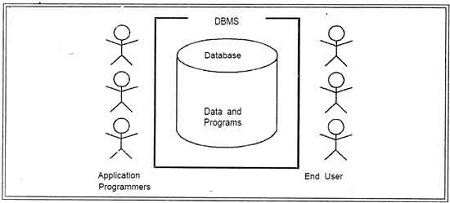DBMC (Components of the Database System Environment )
Components of the Database System Environment
There are five major components in the database system environment and their interrelationship are.
• Hardware
• Software
• Data
• Users
• Procedures
1.Hardware: The hardware is the actual computer system used for keeping and accessing the database. Conventional DBMS hardware consists of secondary storage devices, usually hard disks, on which the database physically resides, together with the associated Input-Output devices, device controllers and· so forth. Databases run on a' range of machines, from Microcomputers to large mainframes. Other hardware issues for a DBMS includes database machines, which is hardware designed specifically to support a database system.
2. Software: The software is the actual DBMS. Between the physical database itself (i.e. the data as actually stored) and the users of the system is a layer of software, usually called the Database Management System or DBMS. All requests from users for access to the database are handled by the DBMS. One general function provided by the DBMS is thus the shielding of database users from complex hardware-level detail.
The DBMS allows the users to communicate with the database. In a sense, it is the mediator between the database and the users. The DBMS controls the access and helps to maintain the consistency of the data. Utilities are usually included as part of the DBMS. Some of the most common utilities are report writers and application development.
3. Data : It is the most important component of DBMS environment from the end users point of view. As shown in observes that data acts as a bridge between the machine components and the user components. The database contains the operational data and the meta-data, the 'data about data'.
The database should contain all the data needed by the organization. One of the major features of databases is that the actual data are separated from the programs that use the data. A database should always be designed, built and populated for a particular audience and for a specific purpose.
4. Users : There are a number of users who can access or retrieve data on demand using the applications and interfaces provided by the DBMS. Each type of user needs different software capabilities. The users of a database system can be classified in the following groups, depending on their degrees of expertise or the mode of their interactions with the DBMS. The users can be:
• Naive Users
• Online Users
• Application Programmers
• Sophisticated Users
• Data Base Administrator (DBA)


